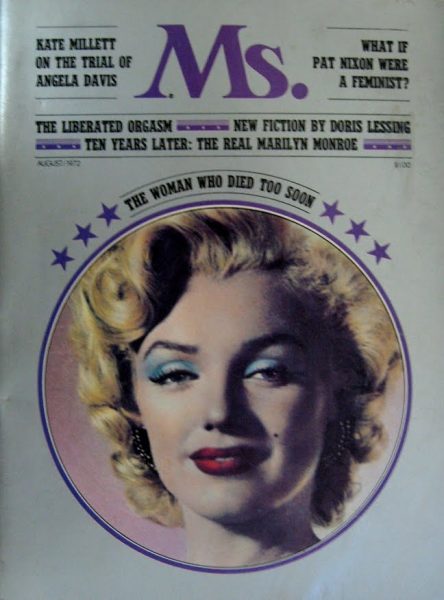
Writing for Ms magazine (founded by Gloria Steinem in 1972), Karina Eileraas considers Marilyn’s impact on women in 2012.
“Monroe’s imprint on my identity and sexuality is traumatic, liberating and breathtaking, all at once. The ubiquity of her image saturated my world, leaving in its wake a puzzling, kaleidoscopic mosaic of fantasies, myths and archetypes about female sexuality, desire and power. ‘Marilyn Monroe’ alternately played siren and dominatrix, intoxicating me with the power and pleasure of an ingenue, yet disciplining my desires with the seemingly flawless, sexy and exuberant styles of femininity that she seemed not only to model but to exhort for young girls and women keen to break free from the domestic ideals of wife and mother that dominated the cultural zeitgeist of 1950s America.
By ‘putting on’ female archetypes with exuberant curiosity and wonder, Monroe explored not only their hold on the collective unconscious but also their enabling role within cultural narratives of violence. While she delighted audiences with performances of female sexuality as a potent, creative force, Monroe simultaneously negotiated sexual agency and self-knowledge in the wake of sexual violation.
In her lifetime, most Hollywood audiences and insiders were unwilling to see Monroe as a savvy ‘reader’ of culture able to dissect the stereotypes she was enlisted to portray. Although she was the most exposed female figure in celluloid history, few encouraged her to display or cultivate her spirit of critical inquiry vis-a-vis celebrity culture. Her reflections on the gendered mechanisms and personal costs of fame were routinely veiled, hidden.
So what does it mean to remember? On the 50th anniversary of her death, I would like to change the public conversation about Marilyn Monroe and imagine a space for Norma Jeane in the collective memory.”
